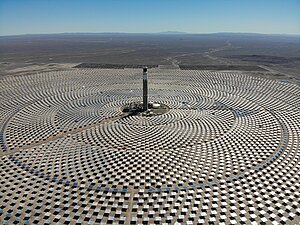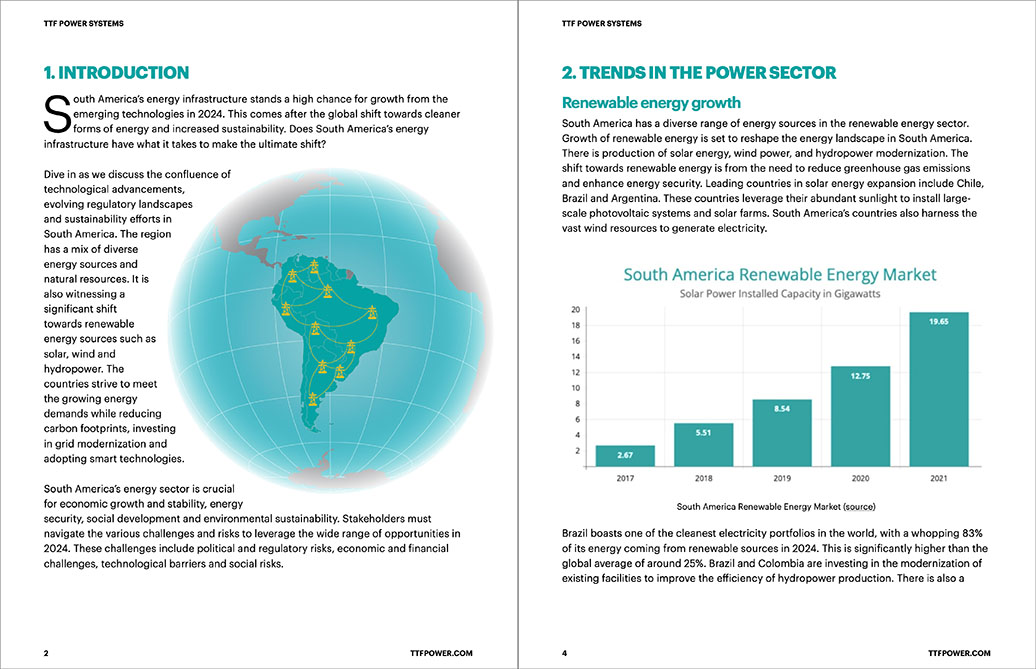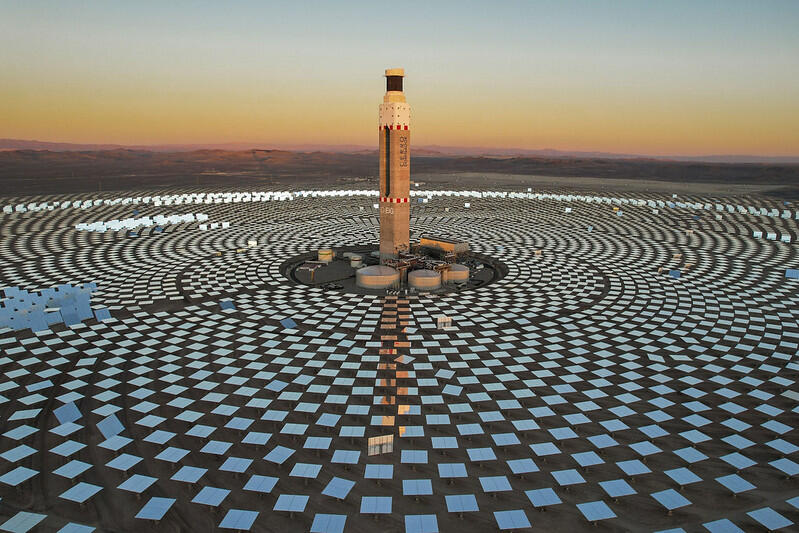
Concentrated solar power (CSP) technology harnesses sunlight to generate electricity. This works by utilizing mirrors or lenses to focus vast amounts of sunlight onto a small region. The concentrated energy is later used to heat a fluid, which powers a turbine connected to a generator. It offers the benefit of thermal energy storage, which enables power generation. South America has accepted this technology because its large sunny expanses are ideal for its development. The region might combine this technology with policy support, technological advances, and foreign investment. There are many CSP facilities in Chile’s Atacama Desert, including Cerro Dominador. Other nations, like Argentina, Peru, and Brazil, have the potential for concentrated solar power.
Evaluating concentrated solar performance in South America.
South America’s plentiful sunlight levels make a compelling justification for CSP deployment. Concentrated solar power facilities have already developed in South America. There are many ways for testing and monitoring the operation of these CSP systems. The major performance indicators are capacity factors, energy yield, performance ratio, and levelized cost of energy. Further, various factors influence the performance of concentrated solar electricity. These include solar energy, technology, thermal storage, grid integration, and operation and maintenance.
Methods and technologies for concentrated solar energy
Concentrated solar power may focus sunlight onto a tiny area. In South America, CSP operates using a variety of approaches and technologies. These were originally designed to take advantage of the region’s vast solar resources. Utilizing these technologies contributes to a more sustainable energy future. This is because they lessen reliance on fossil fuels while increasing energy security. The following are the various technologies utilized for CSP in South America.

- Solar power towers – solar power towers use a field of flat, movable mirrors called heliostats. They concentrate sunlight onto a receiver at the top of a tall tower. The concentrated sunlight heats molten salt to extremely high temperatures. The heated molten salt helps generate steam which drives a turbine to produce electricity. For instance, the Cerro Dominador CSP plant combines a 110MW solar power tower with 17.5 hours of thermal storage. This provides a reliable energy supply for the grid.
- Linear Fresnel reflectors – this uses many flat or curved mirrors to concentrate sunlight onto a fixed receiver above the mirrors. These systems use a heat transfer fluid in the receiver to generate steam. The steam then serves to drive a turbine connected to an electrical generator. This technology can work in smaller-scale projects to other renewable energy sources.
- Hybrid systems – CSP can work with photovoltaic (PV) solar panels to create hybrid systems. These can generate electricity during the day while the CSP plant with storage provides power during non-sunlight hours. They can also serve with wind or biomass to create hybrid renewable energy systems.
- Parabolic trough systems – these consist of long, curved mirrors that focus sunlight onto a receiver tube running along the focal line of the trough. The receiver tube contains a heat transfer fluid heated to high temperatures. The heated fluid helps to produce steam drives a turbine connected to an electrical generator. For instance, the Cerro Dominador project uses this tech combined with molten salt storage to generate electricity.
Problems with CSP plants in South America
The use of concentrated solar power offers many benefits and potential for renewable energy generation. However, it confronts some obstacles that could impede project development and adoption. Companies must handle these difficulties to reach their full potential. Addressing these problems may also enable CSP to contribute to South America’s renewable energy future. The following are common issues for CSP plants.

- Technical and infrastructure challenges – such challenges include grid integration, technical expertise and water usage. Grid integration would need upgrading transmission infrastructure and lead to higher operational costs.
- High capital costs – CSP plants need upfront investments compared to other renewable energy sources. This is including cost of land, mirrors, turbines and thermal storage systems. It can also be hard to secure financing for the concentrated solar power.
- Economic and market conditions – CSP faces competition from established and less expensive renewable energy sources. Energy prices are low which makes it difficult for CSP projects to compete on a cost basis.
